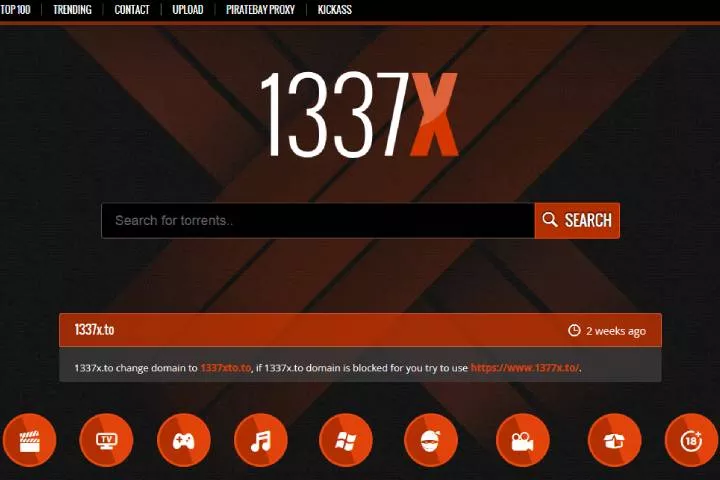Artificial Intelligence (AI)
How will New Vehicle Tech affect Auto Insurance Rates?
The insurance industry is one of these sectors that are affected by advanced technology due to enhanced transparency as well as customer satisfaction.

Nowadays, technology is rapidly progressing at an unstoppable rate, affecting many previously dependent industries on a large number of human resources. The insurance industry is one of these sectors that are affected by advanced technology due to enhanced transparency and customer satisfaction.
This impact can be felt with online shopping, easy comparison, easy claims processing, autonomous features in vehicles, etc.
Continuous technological progress is enabling insurers to design their products smartly, and offer services seamlessly and efficiently. This is proving beneficial for both the insurers and the insured. Here’s how:
1. Internet of Things: Telematics Driving
Insurance plans based on telematics work via apps that track the driving behavior of the insured, such as speeding, mileage, hard braking, and acceleration.
This app can be a vital tool for insurance carriers to track risk so that the underwriting team can get the best premiums based on their driving practice.

Telematics technology enables roadside assistance requests for drivers and gives them the incentive for safe driving, resulting in fewer accidents and dropping the risk of expensive medical bills.
The downside is that telematics will track everything a driver does. Not everyone wants this invasion of personal privacy.
2. You may see usage-based insurance plans
Are you surprised by the usage-based insurance plan? No need to worry is just an extension of the Internet of Things we’ve mentioned in the above point. As we all know, IoT provides digital profiles, and it helps insurers to observe the driving behavior of customers and then create an insurance plan accordingly. Therefore the better you drive, the better you’re priced for an auto insurance policy! So be mindful about your driving to achieve the best price.
Autonomous features
Presently, many new cars have advanced autonomous features, such as radar to sense the speed of the vehicle next to you, automatic and manual parking assistance, navigation, alarms for a driver in sleepy condition, etc. These autonomous features reduce crash risk. Due to this, many insurance companies respond with a cheaper premium.
Some new policies cut prices based on accident-reducing potential driverless features like parking assist and ABS.
Dashboard cameras
Dashboard cameras, also known as dashcams, are fixed on the car’s dashboard or windscreen to record the car’s journey. The use of dash cameras is increasing due to availability and reasonable pricing.

The use of a dashboard camera makes the claims processing task very easy & fraud-free by determining the cause of an accident. They also help in insurance claims processing by clarifying that the accident was not the driver’s fault.
Extra security
Adding advanced security to your vehicle can help minimize your insurance premiums. By introducing additional security highlights like a security alarm, tracking system, etc., the insurers consider such people at lower risk of claims.
These advanced security systems also make it simple to recover vehicles if it is lost or stolen. These safety efforts convince insurers that the vehicle is secured and offers less expensive premiums.
Insurance claims
Insurance claims are addressed faster due to the rapid innovation of new technology — some new technologies like drones, the blockchain, and telematics helps to reduce claims fraud.
Automation in claim processing will help collect the claims information and other supporting documents, map relevant information against the policy coverage database, etc., which makes the validation process more efficient & easy.
3. Vehicle sharing will soon become a common trend
In this modern world, vehicle sharing is becoming extremely popular, and no doubt it will impact car insurance. All you could do is Rent a car in Dubai to a stranger for a fixed amount! If drivers choose this path, then insurance carriers either consider insuring the driver or the sharing company in leased vehicles. In this continuously changing market, anything can happen.

Additional Tip: Subaru Driver-Assist and In-Vehicle Technology
Technology is becoming so advanced that it is protecting the lives of people from road mishaps. Recently, the Subaru Drive-Assist and In-Vehicle technology have been rated as one of the safest vehicle makers globally by the National Highway Traffic Safety Administration and the Insurance Institute for Highway Safety.
In 2019, they introduced a new feature called Eyesight Driver Assist Technology, helping people avoid road accidents using features like pre-collision braking, lane departure warnings, adaptive cruise control sway warnings, and pre-collision throttle management. According to the Highway Loss Data Institute, these features have already reduced pedestrian-related accidents by up to 41%.
Takeaways
Technology has entered every business field, so insurers mustn’t stand still to take a suitable business approach to deal with current business trends. The insurance industry looking forward to competing in this advanced business era should invest in such digital prowess. It will enable them to enhance customer interaction, provide fast & accurate services, and boost business opportunities & profit.
Helpful Resources:
1. Impact of Artificial Intelligence (AI) on the Software Development Industry
2. Do Human Translators Have a Reason to Be Afraid of Advancing Technologies
3. Artificial Intelligence And Its Demands To The Programmers
4. Artificial intelligence (AI): Friend or Foe to Future Designers?
5. E-commerce Chatbots: 13 Ways to Increase Sales, Conversions & Retention
6. Top 10 Artificial Intelligence (AI) App Development Trends
AI Tools
A Guide To Using AI for Knowledge Management
Using AI for knowledge management and to transform massive data pools into actionable insights is not just beneficial; it’s becoming a necessity to stay competitive.

In the digital era, the fusion of AI technology with knowledge management is revolutionizing the way organizations manage and exploit their informational assets. Using AI for knowledge management and to transform massive data pools into actionable insights is not just beneficial; it’s becoming a necessity to stay competitive. Keep reading to unlock the full potential of AI-driven knowledge management.
1. The Intersection of AI and Knowledge Management: A Synergy Explained
Knowledge management traditionally involves capturing, organizing, and distributing knowledge across an organization. When AI steps into this territory, the potential for enhanced efficiency and decision-making emerges. AI algorithms can sort through and analyze data at a rate no human can match, revealing patterns and insights that can be critical for strategic planning. This melding of AI with knowledge management practices is a modern alchemy, creating an invaluable resource.
One of the most significant benefits of integrating AI into knowledge management is the automation of data processing. AI systems can continuously learn from new data, refining their algorithms and providing even richer insights over time. Moving from static data repositories to dynamic knowledge hubs, businesses are now armed with constantly evolving intelligence. This represents a profound shift from data being a static historical record to a dynamic, predictive tool for decision-making.

Customization is another strong suit of AI in this space. Rather than one-size-fits-all information resources, AI can personalize knowledge dissemination to the needs of each employee. The focus moves beyond mere information access to ensuring the right knowledge reaches the right person at the right time.
2. Implementing AI in Your Knowledge Management Strategy
Transitioning to an AI-driven knowledge management system begins with identifying the scope and objectives of knowledge needed. Organizations must be clear about the kind of knowledge that is most valuable and how AI can aid in its cultivation and dissemination.
Following initial evaluations, the selection of appropriate AI tools and technologies becomes the next crucial step. There are various AI solutions designed for specific knowledge management tasks, from natural language processing for content analysis to machine learning models that predict trends and behaviors.
Integrating AI requires a cultural shift within the organization. Employee buy-in is crucial, and it is important to address any concerns about job displacement head-on. Training and educating the workforce on the benefits and use of AI systems can facilitate smoother adoption, ensuring everyone understands the role of AI as a partner, not a replacement, in the knowledge ecosystem.
3. The Impact of AI on Knowledge Retention and Dissemination

The true value of AI in knowledge management is often most visible when assessing knowledge retention and dissemination within the organization. AI-driven systems can significantly enhance the ability to capture institutional knowledge, store it and make it available in engaging, interactive formats that increase retention.
Analytics are also central to measuring the impact of AI on knowledge management. By evaluating these metrics, businesses can see whether the knowledge is being leveraged effectively, which areas may need more focus, and where improvements can be made.
Furthermore, AI can be a boon for training and development programs. By adapting to the learning pace and style of individual employees, AI can deliver personalized training recommendations and content, leading to more effective learning outcomes.
Altogether, AI is transforming the realm of knowledge management with its capacity to automate, personalize, and revolutionize how information is processed and utilized. Challenges notwithstanding, the rewards of integrating AI into knowledge management strategies are profound, paving the way for smarter.

 Instagram3 years ago
Instagram3 years agoBuy IG likes and buy organic Instagram followers: where to buy them and how?

 Instagram3 years ago
Instagram3 years ago100% Genuine Instagram Followers & Likes with Guaranteed Tool

 Business5 years ago
Business5 years ago7 Must Have Digital Marketing Tools For Your Small Businesses

 Instagram4 years ago
Instagram4 years agoInstagram Followers And Likes – Online Social Media Platform





















